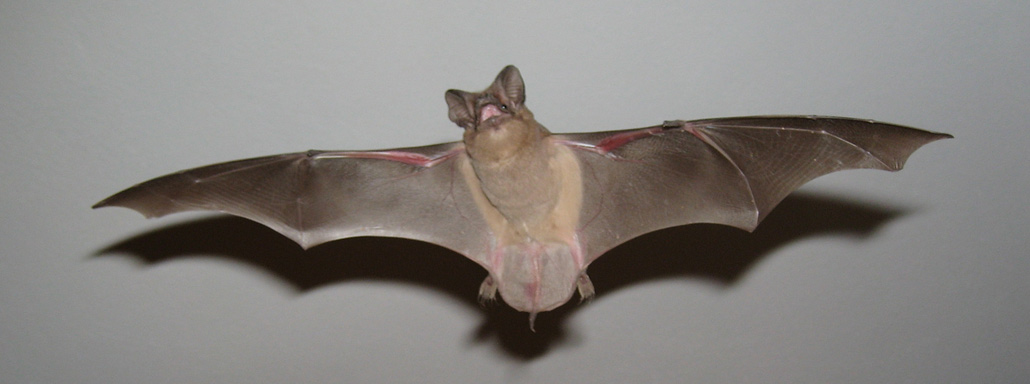- USA Wildlife Removal Education Guide - Biology of Little Brown Bat
Biology of Little Brown Bat

They communicate with each other through a series of high pitched chirps most too high for the human ear to hear. Bats are highly adaptable creatures, and they can almost always find food, water, and shelter anywhere. Because of this trait, it’s not unusual to find bats in make-shift housing. Because Man has been encroaching on the bats natural habitats for years, they will settle for manmade structures like barns, overpasses and under bridges if necessary. In nature, bats prefer to roost in places like caves, rock outcroppings, and hollow trees. All bats habitats, whether man-made or natural, have these things in common: A place to roost during daylight or times of hibernation. Ample food, water, and large area for foraging. Seclusion and safety from predators.
In the late autumn, male and female bats will co-habitat for the purpose of mating. The female stores the male’s sperm in her body while hibernating. When spring comes, she will release his sperm as she ovulates, thus impregnating herself. In early June she will give birth to 1to 3 pups. Females bats join together and form a group called a maternity colony, or cloister, males go off to roost on derelict trees or rocky crags. A maternity colony consists of 10 to 5000 bats, depending on the space. The colony will assure that each bat’s young receive non -stop care and provides support, companionship and love for all the bats. Nose rubbing is common I maternity colonies and is done as a sign of affection. Brown bats find their way by a directions process called echolocation. It uses sound waves that are bounced off nearby objects to “see” where they are going. Bats are highly entertaining to watch, and are natures own pest control service. A group of bats will consume tons of mosquitoes and other insects in a short amount of time. Bats are the only flying mammal in existence today and the only land mammal to use echolocation and sonar. Their born abilities make them a natural resource and we should strive to protect and nurture them.
If you need help, we service the entire USA! Click here for a wildlife removal specialist in your town!
Go back to the main Bat Removal page for more information about Biology of Little Brown Bat.

